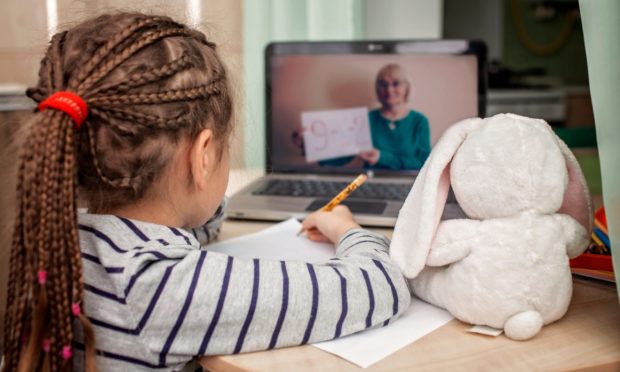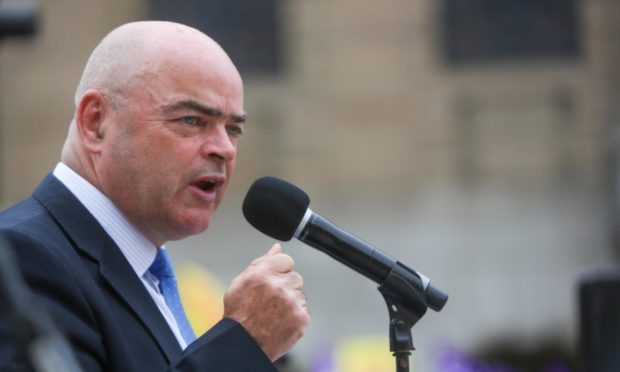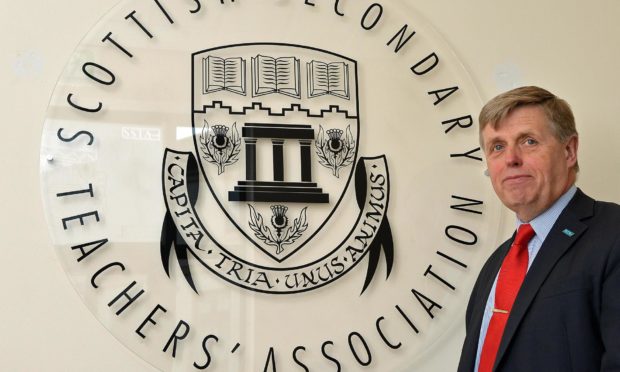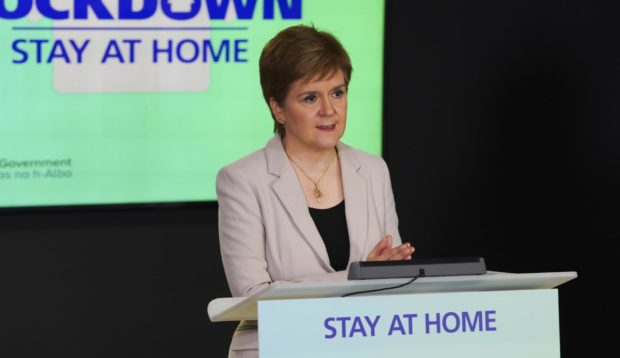Blended learning, physical distancing and assessments – these are just some of the issues at the forefront of getting children back into the classroom.
The Scottish Government is reviewing whether it is safe to reopen schools on February 1 next week, and a decision is expected on Tuesday.
However, Deputy First Minister John Swinney has already said it would be a “tall order” to reopen schools early next month.
Leaders from Scotland’s top teaching unions were quizzed on the necessary safety measures required to get schools open at Scottish Government’s Education and Skills Committee meeting on Wednesday.
Some pupils may also need to return to school before others to complete assessments, if lockdown is extended, according to Scottish Qualifications Authority (SQA) boss.
I think we need to be realistic. We’re looking at possibly remote learning for much longer than the end of January.”
Seamus Searson, SSTA General Secretary
Blended learning
Larry Flanagan, EIS general secretary, said physical distancing must be introduced for pupils in order to return to school safely.
However, this would require capacity in schools to be significantly reduced and would likely result in blended learning.
“One of the new challenges is the new variant and its increase in transmissibility.
“It’s fairly clear, although the evidence is still being worked through, that there is increased transmission amongst young people.”
He added: “It might be that schools can only reopen if you introduce physical distancing amongst pupils which means that we’re back to where we were last August in that you have blended learning and part time attendance.
“Blended learning is better than remote learning but not as good as full time attendance but I think there is a great deal of concern around the new variant and the implications for schools.”
Seamus Searson, general secretary of the Scottish Secondary Teachers’ Association (SSTA) agreed with Mr Flanagan, stating that the government must work out which pupils would be allowed back into school first.
“To have a complete return like we had in August is not possible in these conditions so I think a clear statement from the government on what the plan is going to be to get children back in, what tests have to be reached before we can move forward,” he said.
“I think we need to be realistic. We’re looking at possibly remote learning for much longer than the end of January.”
Secondary school teacher and NASUWT union representative Richard Bell said there had to be a balance of ‘risk mitigations’ which involved a combination of physical distancing, blended learning, and testing and vaccinating teachers.
Prioritisation
Pupils working towards SQA qualifications may have to return to school earlier in order to complete assessments for accreditation, it has been claimed.
Mr Flanagan said teachers could face “significant challenges” around assessing pupils remotely – especially if lockdown exceeds the Easter holidays.
Fiona Robertson, chief executive of the SQA said a ‘range of scenarios’ were being worked through by the National Qualifications 2021 Group, including what would happen if remote learning continued for a “long time”.
Giving evidence to the committee on Wednesday, she said the group – which included the SQA, education directors, inspectors and the EIS teaching union, were considering the possibility of senior phase pupils being prioritised for the return to in class teaching.
Ms Robertson also said the group were considering allowing pupils sitting exams to come back into school for “assessment purposes”.
However, it remains unknown when these decisions will be made.
Earlier this month, First Minister Nicola Sturgeon also discussed a possible phased return, either based on younger pupils returning to school first or pupils from particular areas of Scotland going back to the classroom, depending on virus levels.
She said: “Getting schools open, as opposed to them being essentially closed as they are right now, is not necessarily going to be binary.
“That should not be taken as a definite statement of intent, but we will consider if we can get primary schools back even if we don’t think it’s possible to get secondary schools back.
“Can we get some schools back? That would apply to the regional approach as well, if we do think we could get schools in part of the country but not others – we don’t want the areas where they could be back held back by the areas where it’s not safe.”
Schools are currently closed to the majority of pupils except vulnerable and key worker children.













